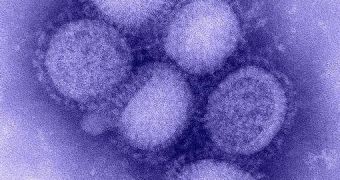At this point, the World Health Organization (WHO) has announced, the flu season in the temperate Northern Hemisphere is over, which means that we will get to a see a reduction in the number of new swine flu cases that appear in these areas. However, health experts warn, the infection will now move south of the Equator, into the other Hemisphere, where the flu season is just starting. During that process, the H1N1 strain will pass through the Equatorial forests and the tropical areas, where they are very likely to experience mutations, and to combine with other pathogens, with potentially lethal results.
In a very small proportion of the world's countries that exist in the tropical areas, flu is not a seasonal occurrence, but rather an year-round fact. WHO health experts believe that these areas, which are often under-supervised, or unmonitored at all, could be the spawning ground for new potent strains of the flu influenza virus, which could then travel both North and South of the Equator, during the seasonal flu outbreaks in those regions. As a result, identifying any new strain at the tropic may be the best thing to do, so as to avoid having to deal with another outbreak similar to this year's in the future.
“We should be getting the message across that it is probably in the tropical countries, more than in the Southern Hemisphere, that this virus will be going through some reassortment contortions in the coming months,” Asia and China flu research veteran Ken Shortridge explains, quoted by Nature News. This year is “the first time in history that we have been able to watch a potentially pandemic virus unfold in advance of a pandemic. This is a magnificent advance, but we are still feeling our way.”
“All the interesting stuff happens in these tropical reservoirs, with the temperate epidemics in both the Northern and Southern Hemispheres being spillovers from that,” University of Oxford Evolutionary Geneticist Oliver Pybus says. He has also been an author for a new study, published earlier this year, which has proven that tropical areas, and especially the ones in Asia, are hotbeds for flu viruses, from H9N2 (in children) to H6N1 (in birds) and H4N6 (in ducks).
The most important thing to do now, experts say, is to keep an eye on these regions, and monitor as many of the new cases of flu as possible, before the flu season returns to the Northern Hemisphere. This could ensure that next year's strain won't be a killer one, made up of a cocktail of genes, which vaccines would do nothing to stop.

 14 DAY TRIAL //
14 DAY TRIAL //